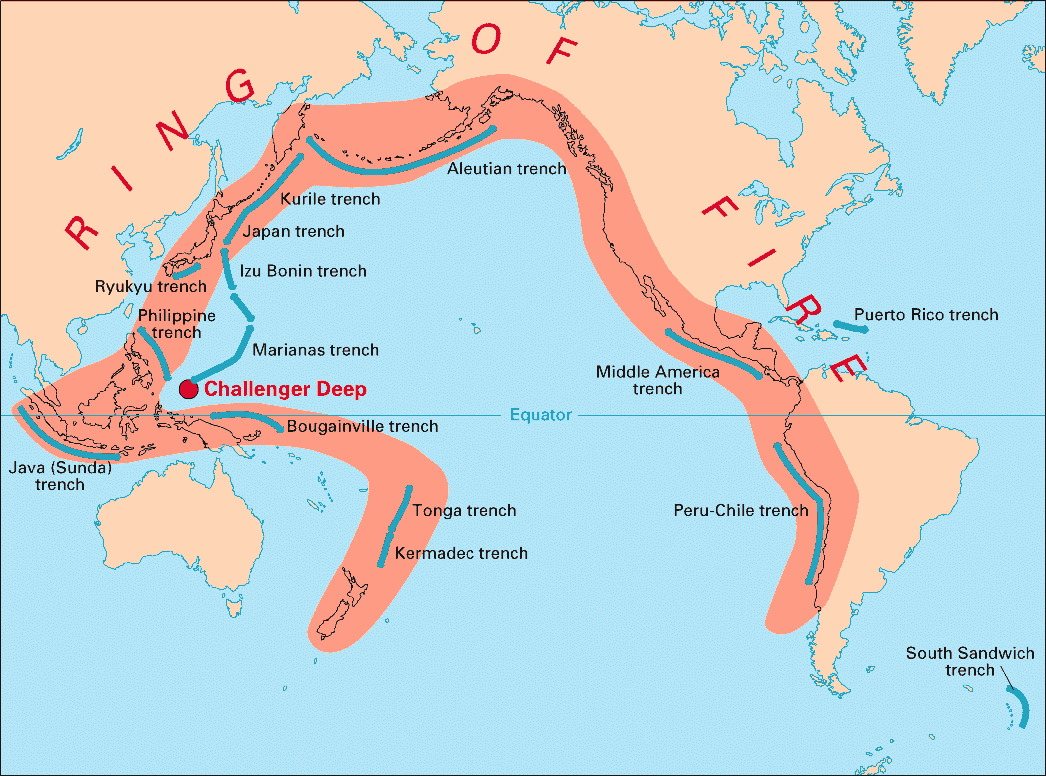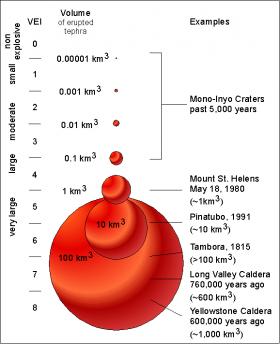
The foundation of our unit, literally, is the structure of volcanoes. It is imperative to be able to distinguish the four main types of volcanoes. Here I have them grouped by the different subcategories, which makes it easier to compare volcanoes
Ms. Meyer's Classroom Blog

















 Magma is the liquid material, composed of rock, found within the actual volcano.
Magma is the liquid material, composed of rock, found within the actual volcano.



On May 18th, 1980 the eruption of Mount St. Helens in southwest Washington disrupted the lives of thousands and changed more than 200 square miles of rich forest into a grey, lifeless landscape. Here are some facts about this historic eruption with the vocabulary we learned this past unit:
Height:MSH was 9,677 feet before the eruption and 8,363 feet after. 1,314 feet was removed by the May 18th eruption.
Debris Avalanche: The largest landslide in recorded history swept down the mountain at speeds of 70 to 150 miles per hour and buried the North Fork of the Toutle River under an average of 150 feet of debris. Some areas are covered by as much as 600 feet. In all, approximately 23 square miles of material was removed from the mountain.
Lateral Blast: The lateral blast swept out of the north side of MSH at 300 miles per hour creating a 230 square mile fan shaped area of devastation reaching a distance of 17 miles from the crater. With temperatures as high as 660 degrees F and the power of 24 megatons of thermal energy, it snapped 100 year old trees like toothpicks and stripped them of their bark.
Lahars: The snow on MSH that was not instantly flashed to steam by the heat, melted and formed large mudflows that destroyed 27 bridges, 200 homes, 185 miles of roadway, and 15 miles of railway.
Pyroclastic Flows: Pyroclastic flows rolled out of the crater for hours after the eruption. Covering 6 square miles, they sterilized the remaining soil with temperatures nearing 1,300 degrees F.
Ash: The massive ash cloud grew to 80,000 feet (18 kilometers) in 15 minutes and reached the east coast in 3 days. Although most of the ash fell within 300 miles of the mountain, finer ash circled the earth in 15 days and may continue to stay in the atmosphere for many years.
Deaths: 57 people were killed as a result of the eruption. Of these, 21 bodies were never recovered from the blast zone.
Lava Domes: The old lava dome rises 876 feet above the crater floor and is about 3,500 feet in diameter. there have been no dome building eruptions on this dome since October 1986. If the dome were to re-establish the growth pattern it had in the 1980's, it would take 200 years to rebuild MSH to its pre-1980 size. The new lava dome (as of 2/1/2005) rises 1363 feet above the 1980 crater floor and is approximately 1500 feel long and 500 feet wide. It has been nicknamed the "whaleback" because of it's distinctive shape.
Damage Estimates: $1.1 billion for timber, civil works and agricultural losses. This does not include money for personal property losses, the cost of ash clean-up, or the loss of tourism in the area immediately after the eruption.
Current Monitoring: MSH can't even twitch without scientist knowing about it. Seismic disturbances, gas emissions, temperature, elevation changes (deformation), water levels, sediment flow rates, and even magma movement are all carefully monitored.
Future Behavior: MSH is expected to continue erupting but no one knows for how long. Pyroclastic flows, lahars, ejection of ash and pumice, and even the possibility of lava flows may all lie somewhere in MSH's future.










 First off I would highly recommend this book to anyone who is interested in environment conservation. Although, it is a little on the long side its a far cry from a science textbook, and the 353 pages go by pretty quickly. However, if you're looking for the movie 2012 in a literary form, this might not be for you. In "The World Without Us", the author Alan Weisman explores what would happen to our world if humans were to suddenly disappear. The novel shows the massive effect that humans have on the environment, and how in merely a few days the earth would begin the process of self-healing. He uses the city of New York and the Panama Canal to show how humans restrain the flow of oceans, and how with one day of unsupervised rainfall in New York, Manhattan would be inaccessible. Weisman also travels to various parts of the world that are already almost completely void of humans, such as the area around the Chernobyl nuclear catastrophe in Russia, and the piece of land that separates North and South Korea. He uses these areas to represent how our world will recover when we all have left. It was also extremely interesting how Weisman explored nuclear waste plants, and showed how the affects of these plants will be our legacy on earth for thousands of years. I've recommended this book to many people already and if you've ever wondered what our planet might look like if not for us then this just might be the book for you!
First off I would highly recommend this book to anyone who is interested in environment conservation. Although, it is a little on the long side its a far cry from a science textbook, and the 353 pages go by pretty quickly. However, if you're looking for the movie 2012 in a literary form, this might not be for you. In "The World Without Us", the author Alan Weisman explores what would happen to our world if humans were to suddenly disappear. The novel shows the massive effect that humans have on the environment, and how in merely a few days the earth would begin the process of self-healing. He uses the city of New York and the Panama Canal to show how humans restrain the flow of oceans, and how with one day of unsupervised rainfall in New York, Manhattan would be inaccessible. Weisman also travels to various parts of the world that are already almost completely void of humans, such as the area around the Chernobyl nuclear catastrophe in Russia, and the piece of land that separates North and South Korea. He uses these areas to represent how our world will recover when we all have left. It was also extremely interesting how Weisman explored nuclear waste plants, and showed how the affects of these plants will be our legacy on earth for thousands of years. I've recommended this book to many people already and if you've ever wondered what our planet might look like if not for us then this just might be the book for you!

 So, I thought I would give a little overview on the different hazards that derive from volcanoes.
So, I thought I would give a little overview on the different hazards that derive from volcanoes. 





 s we turned in the homework assignment from Tuesday night, and because not many people did it, instead of counting as a homework grade, it goes towards extra-credit on our quiz we took on Tuesday. Then we continued watching "Inside the Volcano" which is a movie describing different well-known volcanoes and the effects that they have/had on surrounding civilizations. Today we learned about Thera in Santorini, Mount Vesuvius in Italy, and Tambora in Indonesia (one of the many volcanoes located on the ring of fire). Also, the Google Earth lab we did in class on Tuesday is due on Monday at the end of the day if you have not already completed it.
s we turned in the homework assignment from Tuesday night, and because not many people did it, instead of counting as a homework grade, it goes towards extra-credit on our quiz we took on Tuesday. Then we continued watching "Inside the Volcano" which is a movie describing different well-known volcanoes and the effects that they have/had on surrounding civilizations. Today we learned about Thera in Santorini, Mount Vesuvius in Italy, and Tambora in Indonesia (one of the many volcanoes located on the ring of fire). Also, the Google Earth lab we did in class on Tuesday is due on Monday at the end of the day if you have not already completed it.
 So we all know that lightning happens in big storms, and Ms. Meyer told us of lightning during volcanic eruptions. I actually didn't think that the lightning during these eruptions was coming from the eruption itself. I thought there just happened to be a storm or something.
So we all know that lightning happens in big storms, and Ms. Meyer told us of lightning during volcanic eruptions. I actually didn't think that the lightning during these eruptions was coming from the eruption itself. I thought there just happened to be a storm or something. collide. The positive and negative charges separate onto opposite ends creating the electric flow. When the said flow becomes to great for the air to handle you actually can see the electricity, lightning.
collide. The positive and negative charges separate onto opposite ends creating the electric flow. When the said flow becomes to great for the air to handle you actually can see the electricity, lightning.



